Autocrine hemokinin-1 functions as an endogenous adjuvant for IgE-mediated mast cell inflammatory responses
- PMID: 25201259
- PMCID: PMC4362795
- DOI: 10.1016/j.jaci.2014.07.036
Autocrine hemokinin-1 functions as an endogenous adjuvant for IgE-mediated mast cell inflammatory responses
Abstract
Background: Efficient development of atopic diseases requires interactions between allergen and adjuvant to initiate and amplify the underlying inflammatory responses. Substance P (SP) and hemokinin-1 (HK-1) are neuropeptides that signal through the neurokinin-1 receptor (NK1R) to promote inflammation. Mast cells initiate the symptoms and tissue effects of atopic disorders, secreting TNF and IL-6 after FcεRI cross-linking by antigen-IgE complexes (FcεRI-activated mast cells [FcεRI-MCs]). Additionally, MCs express the NK1R, suggesting an adjuvant role for NK1R agonists in FcεRI-MC-mediated pathologies; however, in-depth research addressing this relevant aspect of MC biology is lacking.
Objective: We sought to investigate the effect of NK1R signaling and the individual roles of SP and HK-1 as potential adjuvants for FcεRI-MC-mediated allergic disorders.
Methods: Bone marrow-derived mast cells (BMMCs) from C57BL/6 wild-type (WT) or NK1R(-/-) mice were used to investigate the effects of NK1R signaling on FcεRI-MCs. BMMCs generated from Tac1(-/-) mice or after culture with Tac4 small interfering RNA were used to address the adjuvancy of SP and HK-1. WT, NK1R(-/-), and c-Kit(W-sh/W-sh) mice reconstituted with WT or NK1R(-/-) BMMCs were used to evaluate NK1R signaling on FcεRI-MC-mediated passive local and systemic anaphylaxis and on airway inflammation.
Results: FcεRI-activated MCs upregulated NK1R and HK-1 transcripts and protein synthesis, without modifying SP expression. In a positive signaling loop HK-1 promoted TNF and IL-6 secretion by MC degranulation and protein synthesis, the latter through the phosphoinositide 3-kinase/Akt/nuclear factor κB pathways. In vivo NK1R signaling was necessary for the development of passive local and systemic anaphylaxis and airway inflammation.
Conclusions: FcεRI stimulation of MCs promotes autocrine secretion of HK-1, which signals through NK1R to provide adjuvancy for efficient development of FcεRI-MC-mediated disorders.
Keywords: FcεRI; Hemokinin-1; IL-6; IgE; TNF; airway inflammation; mast cells; neurokinin-1 receptor; passive anaphylaxis; substance P.
Copyright © 2014 American Academy of Allergy, Asthma & Immunology. Published by Elsevier Inc. All rights reserved.
Figures
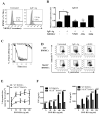
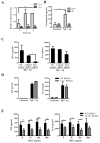
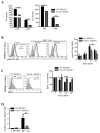
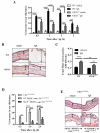
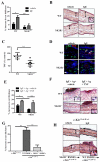
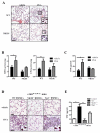
Similar articles
-
Lipopolysaccharide suppresses IgE-mast cell-mediated reactions.Clin Exp Allergy. 2017 Dec;47(12):1574-1585. doi: 10.1111/cea.13013. Epub 2017 Oct 10. Clin Exp Allergy. 2017. PMID: 28833704 Free PMC article.
-
Sirtuin 6 is a negative regulator of FcεRI signaling and anaphylactic responses.J Allergy Clin Immunol. 2022 Jan;149(1):156-167.e7. doi: 10.1016/j.jaci.2021.05.012. Epub 2021 May 26. J Allergy Clin Immunol. 2022. PMID: 34051221
-
Peanut-induced intestinal allergy is mediated through a mast cell-IgE-FcepsilonRI-IL-13 pathway.J Allergy Clin Immunol. 2010 Aug;126(2):306-16, 316.e1-12. doi: 10.1016/j.jaci.2010.05.017. Epub 2010 Jul 10. J Allergy Clin Immunol. 2010. PMID: 20624645 Free PMC article.
-
[Elucidation of Mast Cell Activation Mechanism Mediated by Purinergic Signaling].Yakugaku Zasshi. 2021;141(9):1057-1061. doi: 10.1248/yakushi.21-00113. Yakugaku Zasshi. 2021. PMID: 34471006 Review. Japanese.
-
Recent Knowledge and Insights on the Mechanisms of Immediate Hypersensitivity and Anaphylaxis: IgE/FcεRI- and Non-IgE/FcεRI-Dependent Anaphylaxis.Curr Pharm Des. 2023;29(3):178-184. doi: 10.2174/1381612829666221025091827. Curr Pharm Des. 2023. PMID: 36284380 Review.
Cited by
-
SP and IL-33 together markedly enhance TNF synthesis and secretion from human mast cells mediated by the interaction of their receptors.Proc Natl Acad Sci U S A. 2017 May 16;114(20):E4002-E4009. doi: 10.1073/pnas.1524845114. Epub 2017 May 1. Proc Natl Acad Sci U S A. 2017. PMID: 28461492 Free PMC article.
-
Skin codelivery of contact sensitizers and neurokinin-1 receptor antagonists integrated in microneedle arrays suppresses allergic contact dermatitis.J Allergy Clin Immunol. 2022 Jul;150(1):114-130. doi: 10.1016/j.jaci.2021.12.794. Epub 2022 Jan 24. J Allergy Clin Immunol. 2022. PMID: 35085664 Free PMC article.
-
Mast Cells and Their Related Gene HK-1 are Closely Associated with Discogenic Low Back Pain: A Bioinformatics and Clinical Sample Study.J Pain Res. 2024 Apr 8;17:1401-1412. doi: 10.2147/JPR.S454785. eCollection 2024. J Pain Res. 2024. PMID: 38618297 Free PMC article.
-
Neuropeptides CRH, SP, HK-1, and Inflammatory Cytokines IL-6 and TNF Are Increased in Serum of Patients with Fibromyalgia Syndrome, Implicating Mast Cells.J Pharmacol Exp Ther. 2016 Mar;356(3):664-72. doi: 10.1124/jpet.115.230060. Epub 2016 Jan 13. J Pharmacol Exp Ther. 2016. PMID: 26763911 Free PMC article.
-
Neurotransmitter and neuropeptide regulation of mast cell function: a systematic review.J Neuroinflammation. 2020 Nov 25;17(1):356. doi: 10.1186/s12974-020-02029-3. J Neuroinflammation. 2020. PMID: 33239034 Free PMC article.
References
-
- Mathers AR, Tckacheva OA, Janelsins BM, Shufesky WJ, Morelli AE, Larregina AT. In vivo signaling through the neurokinin 1 receptor favors transgene expression by Langerhans cells and promotes the generation of Th1- and Tc1-biased immune responses. J Immunol. 2007;178:7006–17. - PubMed
Publication types
MeSH terms
Substances
Grants and funding
LinkOut - more resources
Full Text Sources
Other Literature Sources
Miscellaneous

